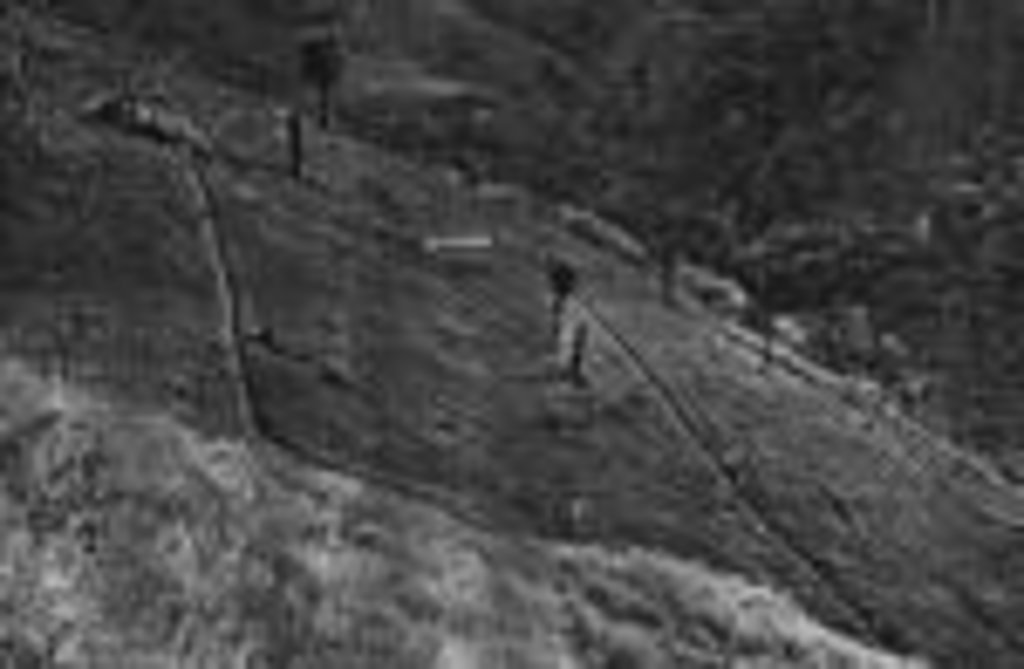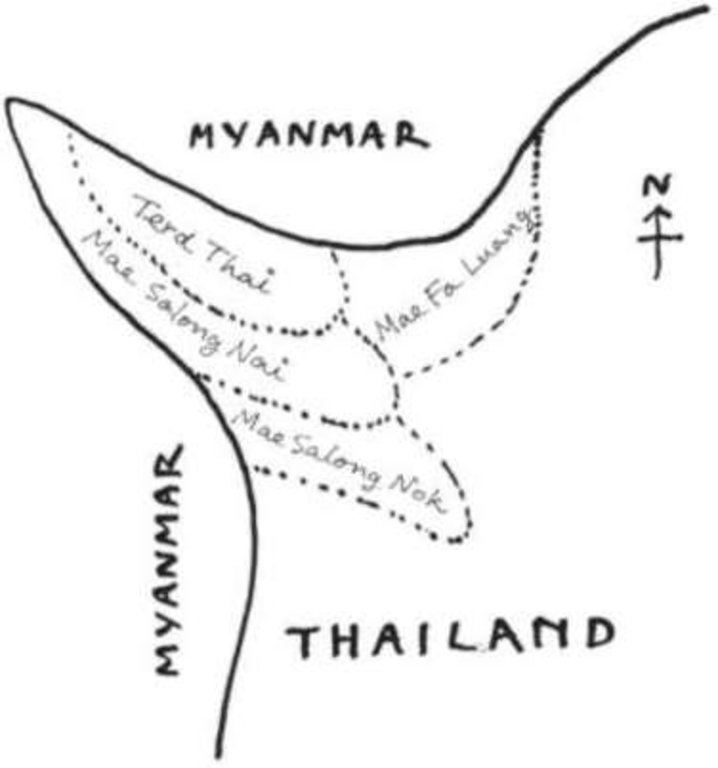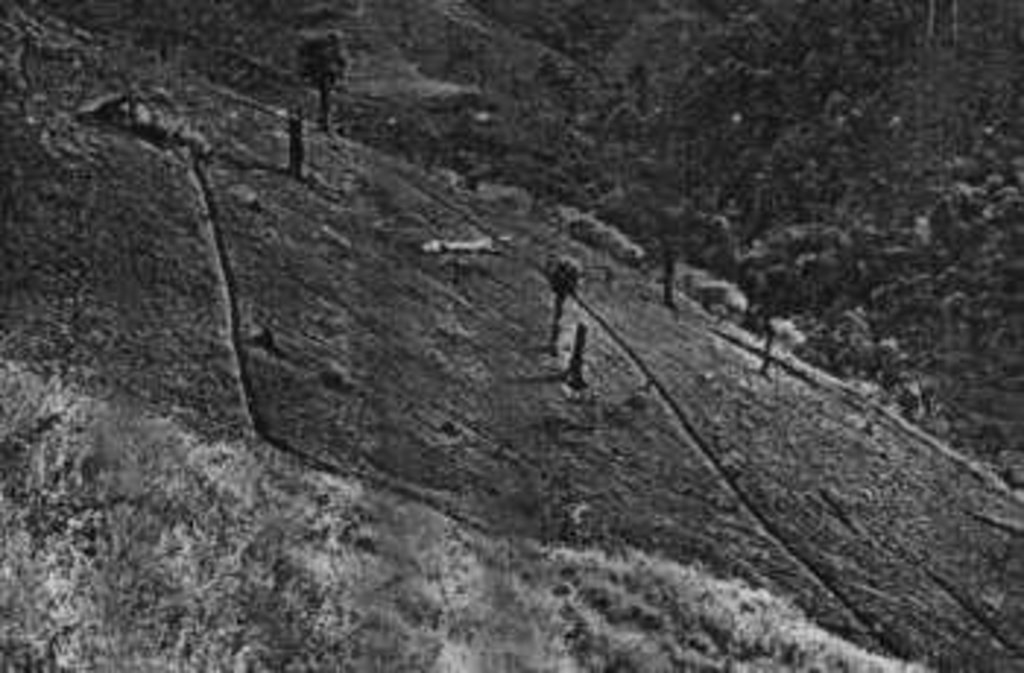Cut-off drain [Thailand]
- Creation:
- Update:
- Compiler: Samran Sombatpanit
- Editor: –
- Reviewer: Fabian Ottiger
approaches_2622 - Thailand
View sections
Expand all Collapse all1. General information
1.2 Contact details of resource persons and institutions involved in the assessment and documentation of the Approach
SLM specialist:
Name of the institution(s) which facilitated the documentation/ evaluation of the Approach (if relevant)
World Association of Soil and Water Conservation (WASWC) - ChinaName of the institution(s) which facilitated the documentation/ evaluation of the Approach (if relevant)
Swiss Agency for Development and Cooperation (DEZA / COSUDE / DDC / SDC) - Switzerland1.3 Conditions regarding the use of data documented through WOCAT
The compiler and key resource person(s) accept the conditions regarding the use of data documented through WOCAT:
Yes
1.4 Reference(s) to Questionnaire(s) on SLM Technologies

Cut-off drain [Thailand]
Cut-off drain is a drainage ditch dug to quickly drain water out of sloping agricultural land.
- Compiler: Unknown User
2. Description of the SLM Approach
2.1 Short description of the Approach
This approach is the 'way' or 'how' the cut-off drain has been implemented on steepland in northern Thailand.
2.2 Detailed description of the Approach
Detailed description of the Approach:
Aims / objectives: The cut-off drain is a kind of soil conservation measure which functions in the way that excess runoff will gather in these drains, which are constructed parallel with each other, and leave the cropped field without causing damage to it. This cut-off drain will be constructed only on steepland with large acreage. Fields smaller than 0.16 ha will not have it. The digging of the cut-off drain will be done before rainy season, using one hand hoe breadth and 20-30 cm deep. In the following year, loose earth material may be dug up and the drain may eventually be as large as 40 cm wide and 40 cm deep. This is an indigenous practice which farmers do it by themselves in their farm and they are not paid for their wages by any agency. In some cases poorer people may be hired by richer ones to dig cut-off drains. State agencies and extension workers have never promoted this T and A anywhere.
2.3 Photos of the Approach
2.5 Country/ region/ locations where the Approach has been applied
Country:
Thailand
Region/ State/ Province:
Amphur Mae Fa Luang
Map
×2.7 Type of Approach
- traditional/ indigenous
2.8 Main aims/ objectives of the Approach
The Approach focused on SLM only
1. To drain runoff water, 2. To reduce soil erosion, 3. To stabilize crop yield.
The SLM Approach addressed the following problems: Steepland in the North, where rainfall is high, has been brought to cultivation. There apparently was a sign of excessive runoff from the land, farmers in the past therefore started to dig the ditch to drain water away to the side of the field.
2.9 Conditions enabling or hindering implementation of the Technology/ Technologies applied under the Approach
knowledge about SLM, access to technical support
- hindering
The cut-off drain will not be implemented in small fields, e.g. a field < 0.16 ha.
Treatment through the SLM Approach:
3. Participation and roles of stakeholders involved
3.1 Stakeholders involved in the Approach and their roles
- local land users/ local communities
Specific ethnic groups: E-kaw, Lahu, Lisu, Mien, Khin, Thai Yai, Haw Chinese, H'mong
Farmers do it by themselves. Farmers feel it is necessary to construct the cut-off drain so they will do it inspite of being resource poor if conditions for doing it apply.
3.2 Involvement of local land users/ local communities in the different phases of the Approach
| Involvement of local land users/ local communities | Specify who was involved and describe activities | |
|---|---|---|
| initiation/ motivation | none | |
| planning | none | |
| implementation | none | responsibility for major steps |
| monitoring/ evaluation | none | |
| Research | none |
3.4 Decision-making on the selection of SLM Technology/ Technologies
Specify who decided on the selection of the Technology/ Technologies to be implemented:
- land users alone (self-initiative)
Explain:
land user driven (bottom-up).
Decisions on the method of implementing the SLM Technology were made by by land users* alone (self-initiative / bottom-up). land user driven (bottom-up).
4. Technical support, capacity building, and knowledge management
4.2 Advisory service
Do land users have access to an advisory service?
Yes
Specify whether advisory service is provided:
- on land users' fields
Describe/ comments:
Name of method used for advisory service: Farmer to farmer; Key elements: Simplicity, Low cost, Functionality
4.3 Institution strengthening (organizational development)
Have institutions been established or strengthened through the Approach?
- no
4.5 Research
Was research part of the Approach?
Yes
- socio-economics, bio-physical
5. Financing and external material support
5.1 Annual budget for the SLM component of the Approach
Comments (e.g. main sources of funding/ major donors):
Approach costs were met by the following donors: other (Personal fund): 100.0%
5.2 Financial/ material support provided to land users
Did land users receive financial/ material support for implementing the Technology/ Technologies?
No
5.3 Subsidies for specific inputs (including labour)
If labour by land users was a substantial input, was it:
- voluntary
Comments:
They do it by themselves through their perception.
5.4 Credit
Was credit provided under the Approach for SLM activities?
No
6. Impact analysis and concluding statements
6.1 Impacts of the Approach
Did the Approach help land users to implement and maintain SLM Technologies?
- No
- Yes, little
- Yes, moderately
- Yes, greatly
Construction of cut-off drains
Did other land users / projects adopt the Approach?
- No
- Yes, little
- Yes, moderately
- Yes, greatly
This is considered a way of farming only and may not be regarded as important.
6.3 Sustainability of Approach activities
Can the land users sustain what has been implemented through the Approach (without external support)?
- yes
6.4 Strengths/ advantages of the Approach
| Strengths/ advantages/ opportunities in the land user’s view |
|---|
| Reduce soil loss in large areas grown to field crop |
| Can use as a path in the field |
| Strengths/ advantages/ opportunities in the compiler’s or other key resource person’s view |
|---|
| Reduce soil loss in large areas grown to field crop (How to sustain/ enhance this strength: Adjust the gradient not to be too steep so the effect from scouring can be decreased) |
| Can use as a path in the field |
| Reduce soil loss in large areas grown to field crop (How to sustain/ enhance this strength: Adjust the gradient to be less steep, to prevent excessive scouring) |
| Can use as a path in the field |
6.5 Weaknesses/ disadvantages of the Approach and ways of overcoming them
| Weaknesses/ disadvantages/ risks in the land user’s view | How can they be overcome? |
|---|---|
| None |
| Weaknesses/ disadvantages/ risks in the compiler’s or other key resource person’s view | How can they be overcome? |
|---|---|
| A part of cropped area is lost. | No way |
7. References and links
7.1 Methods/ sources of information
- field visits, field surveys
- interviews with land users
7.2 References to available publications
Title, author, year, ISBN:
Turkelboom, f. 1999. On-farm diagnosis of steepland erosion in Northern Thailand. PhD thesis. 309 pp.Pongsapich, A. 1998. Indigenous Technical Knowledge for Land Mgmt in Asia. Issues in sustainable land mgmt No. 3. 152 pp.
Available from where? Costs?
Katholieke Universiteit Leuven, Leuven, BelgiumIBSRAM, Bangkok
Title, author, year, ISBN:
Pongsapich, A. 1998. Indigenous Technical Knowledge for Land Mgmt in Asia. Issues in sustainable land mgmt No. 3. 152 pp.
Available from where? Costs?
IBSRAM, Bangkok
Links and modules
Expand all Collapse allLinks

Cut-off drain [Thailand]
Cut-off drain is a drainage ditch dug to quickly drain water out of sloping agricultural land.
- Compiler: Unknown User
Modules
No modules






